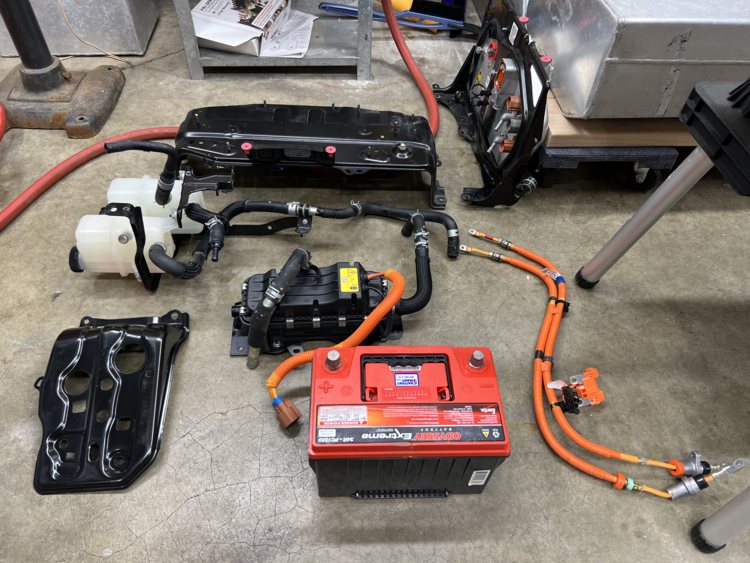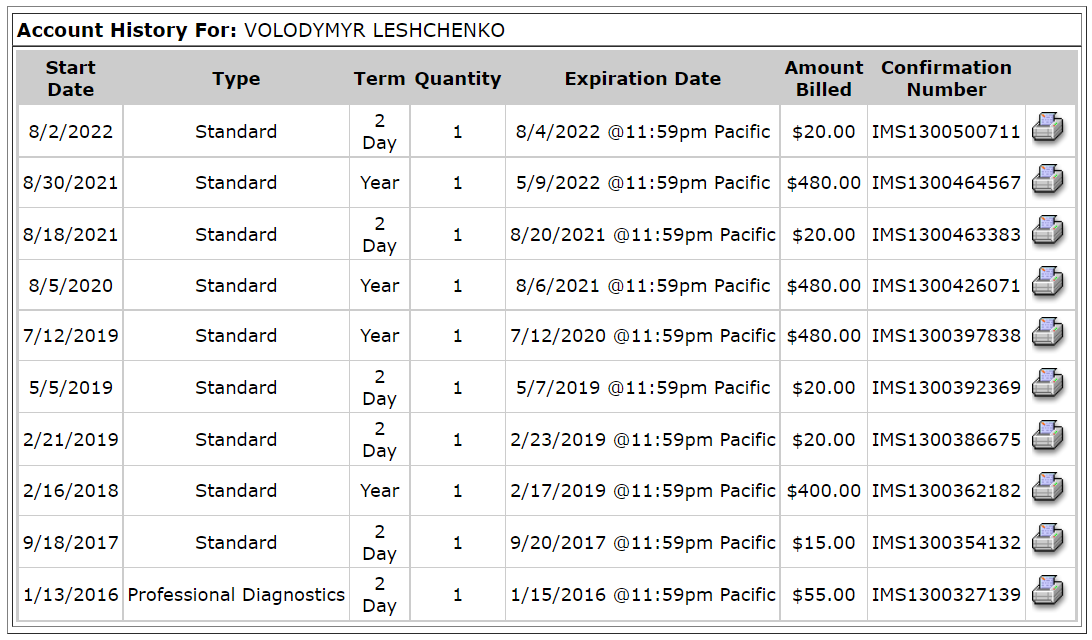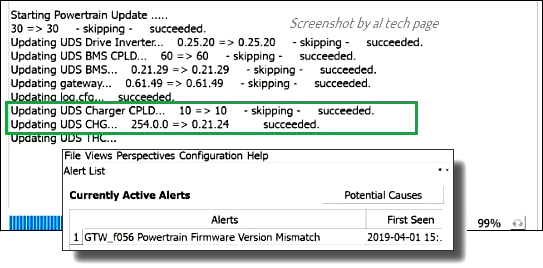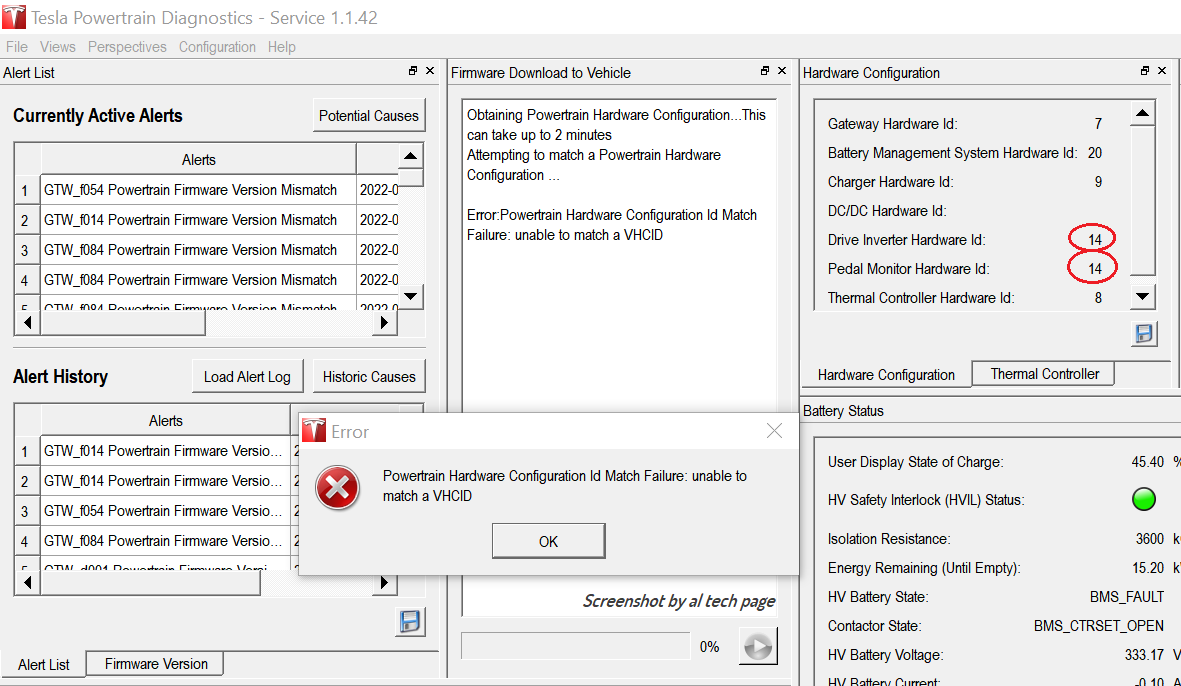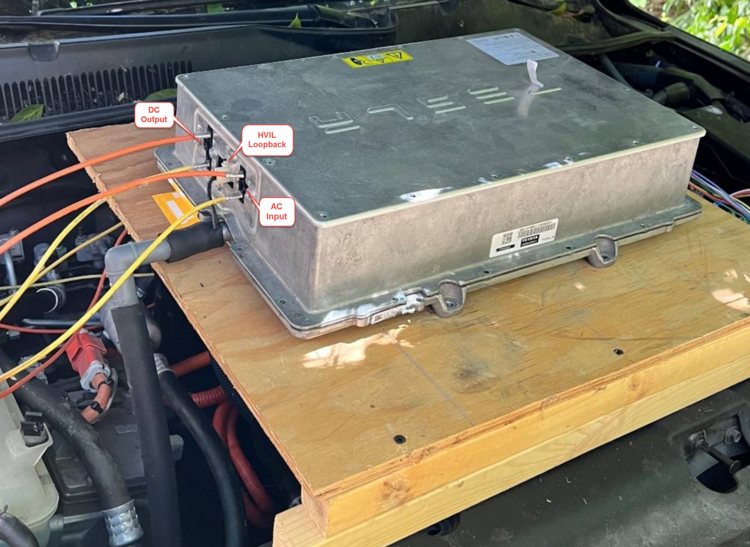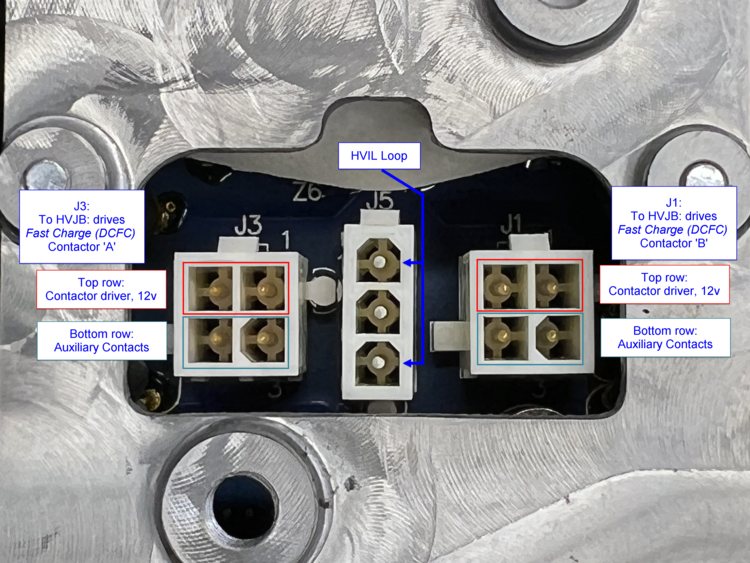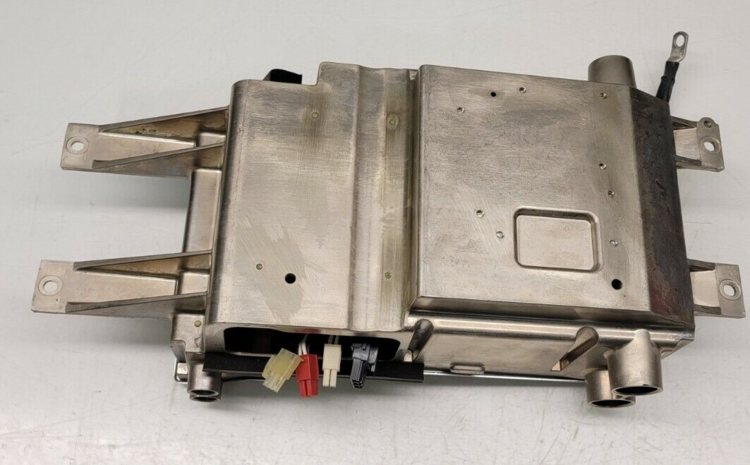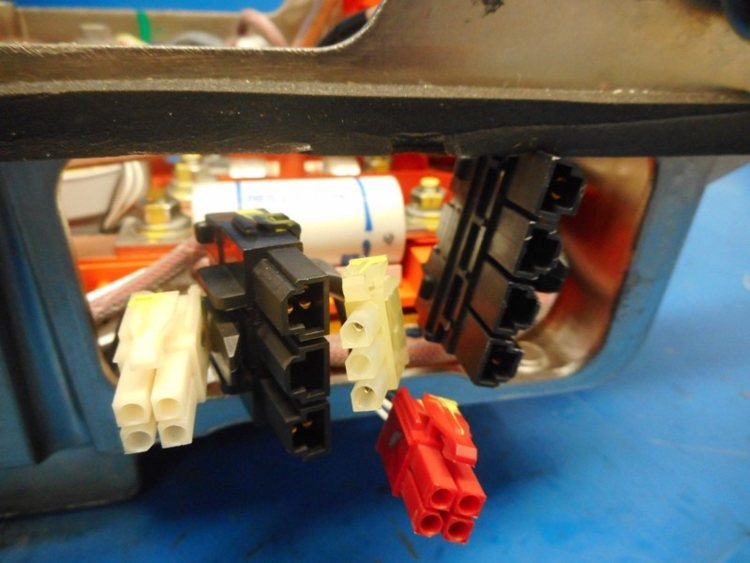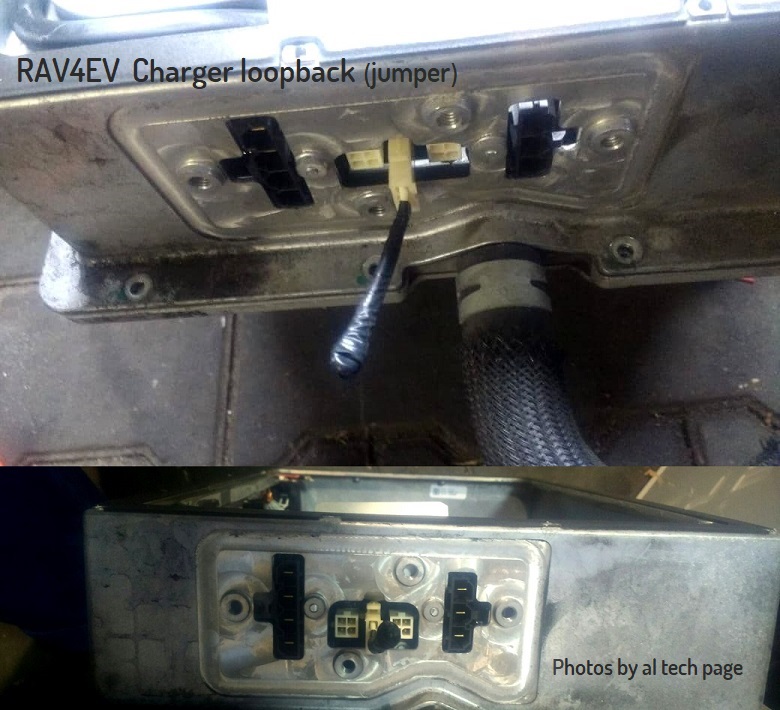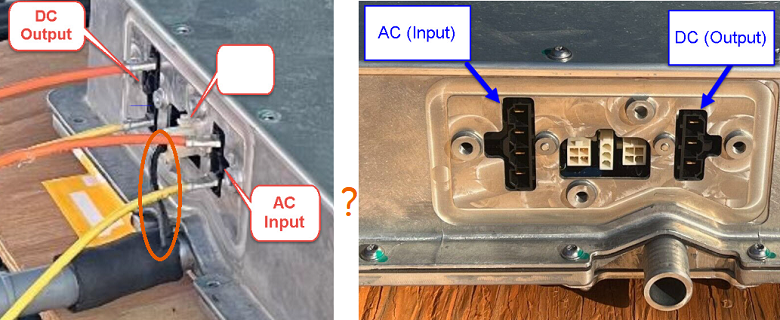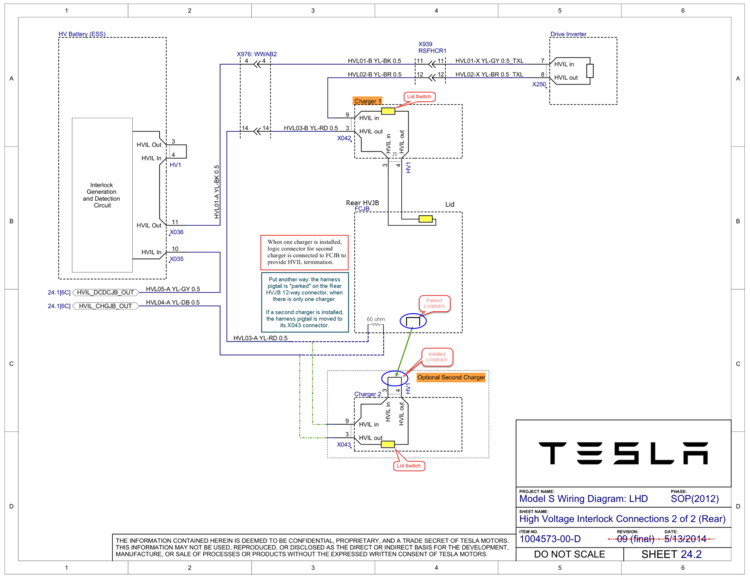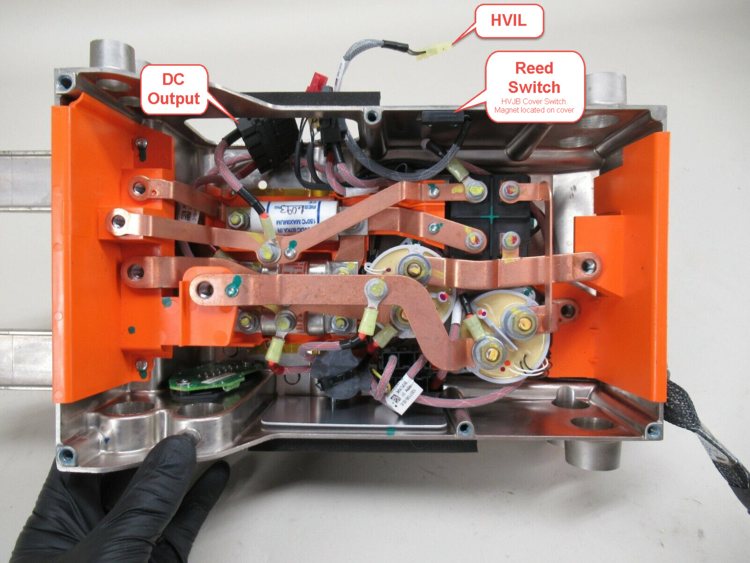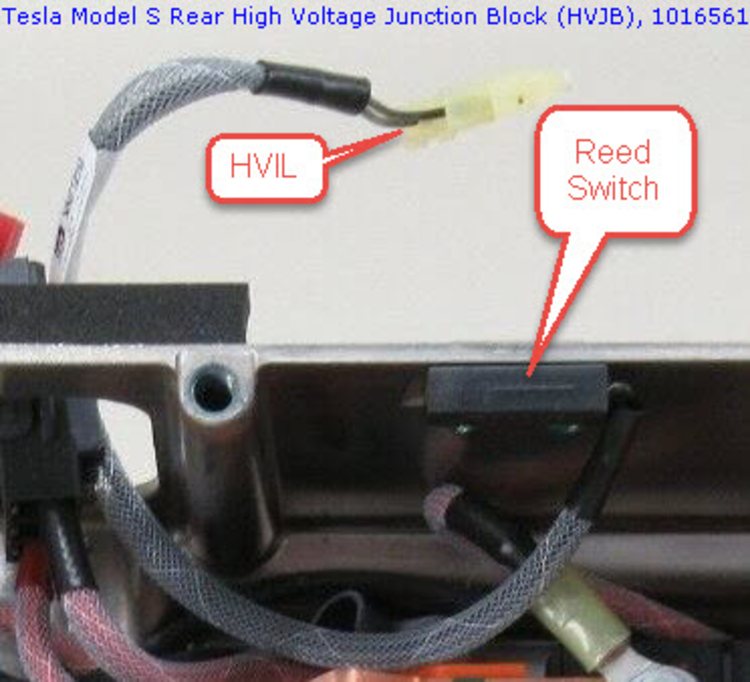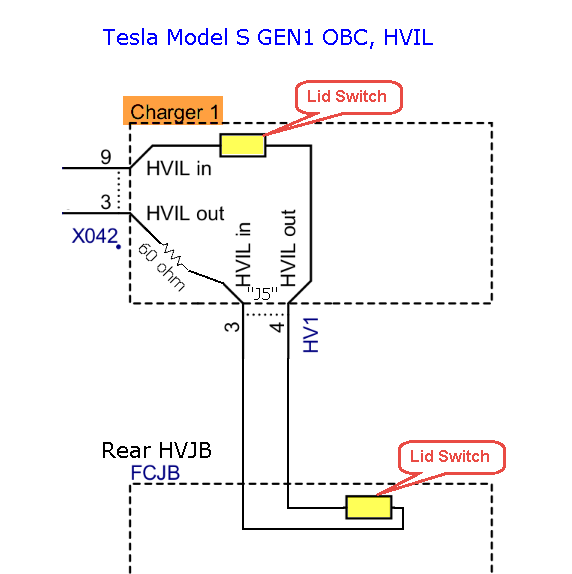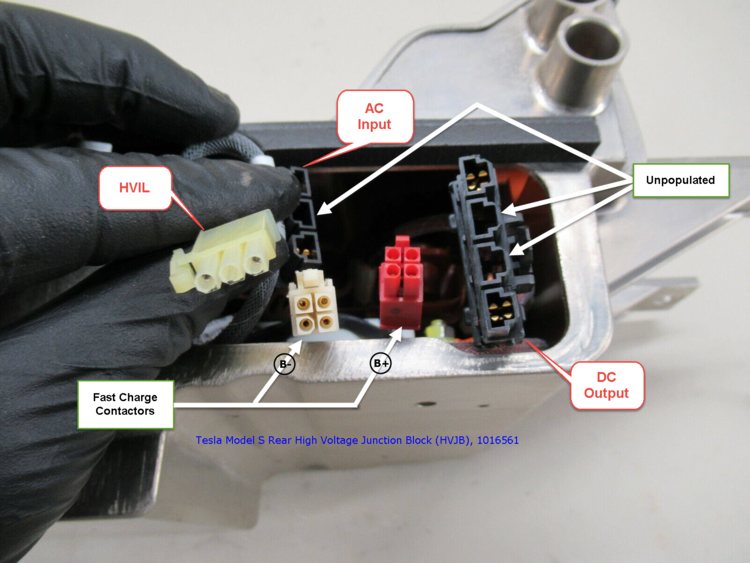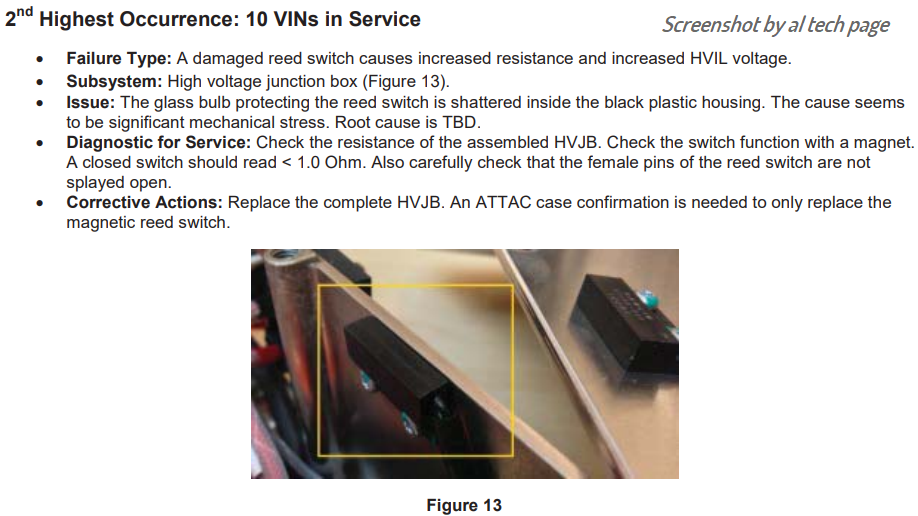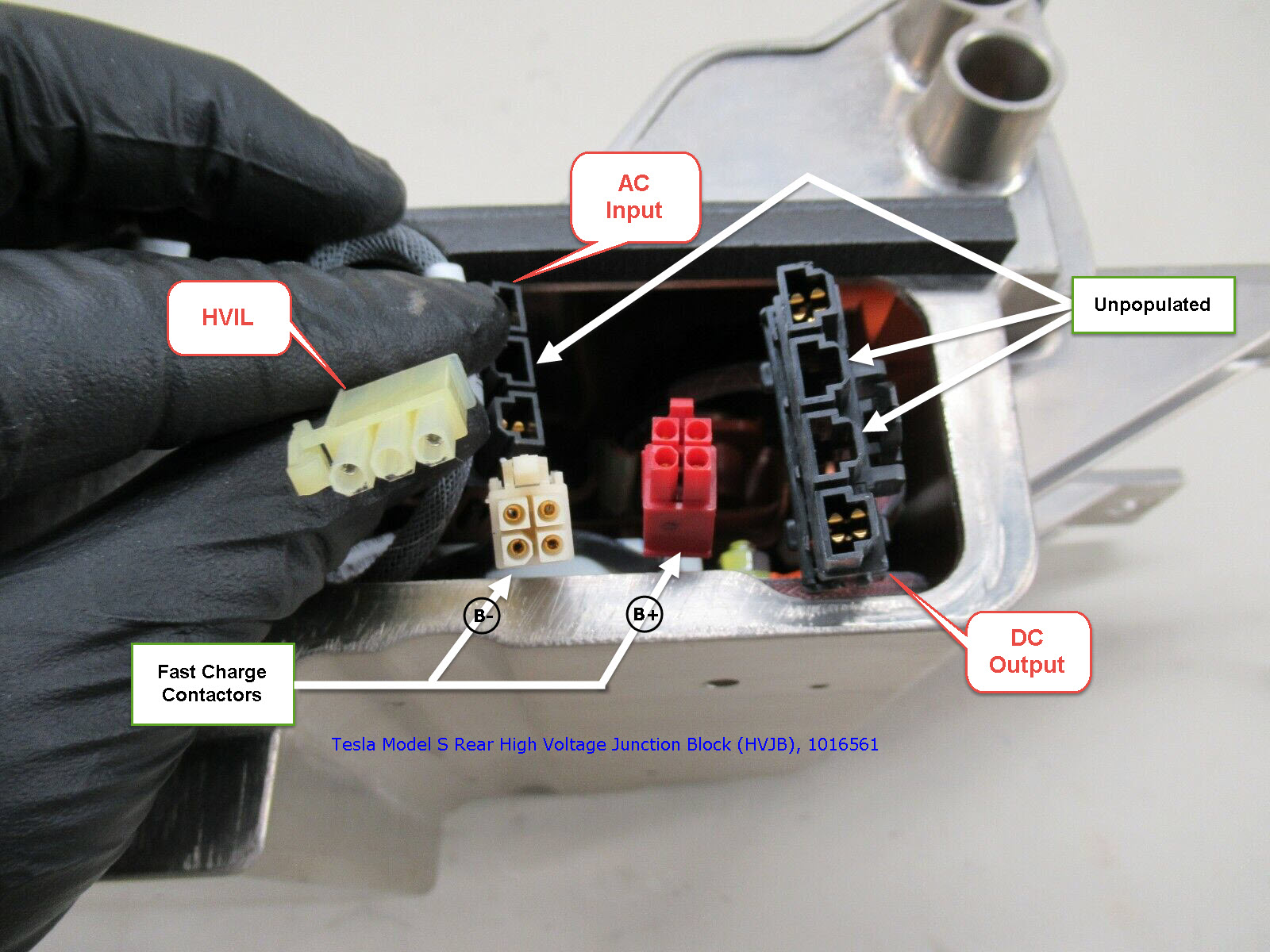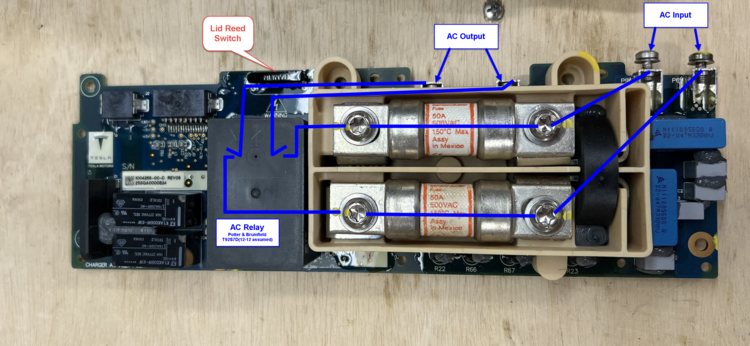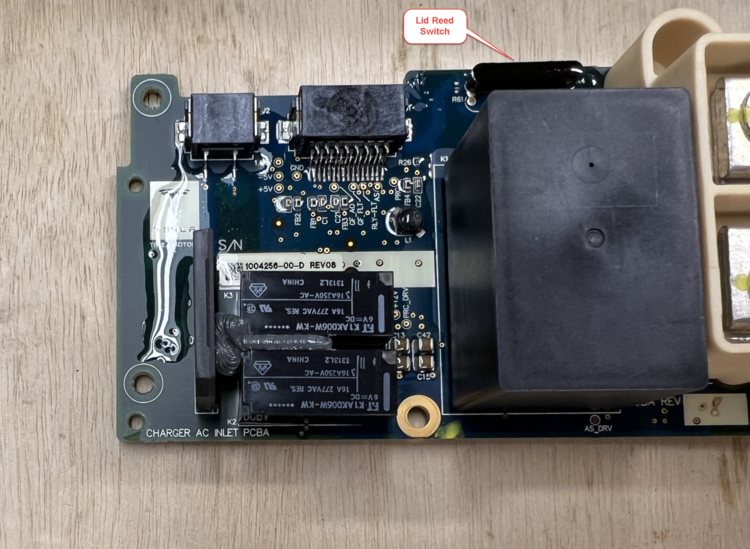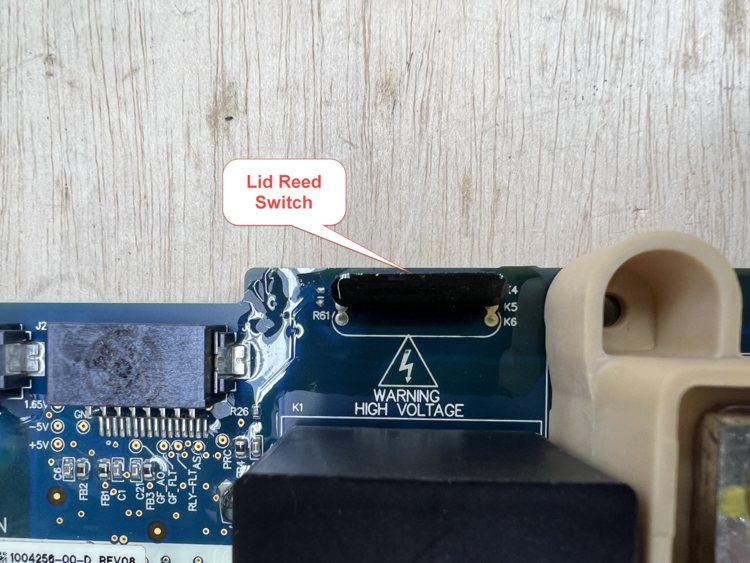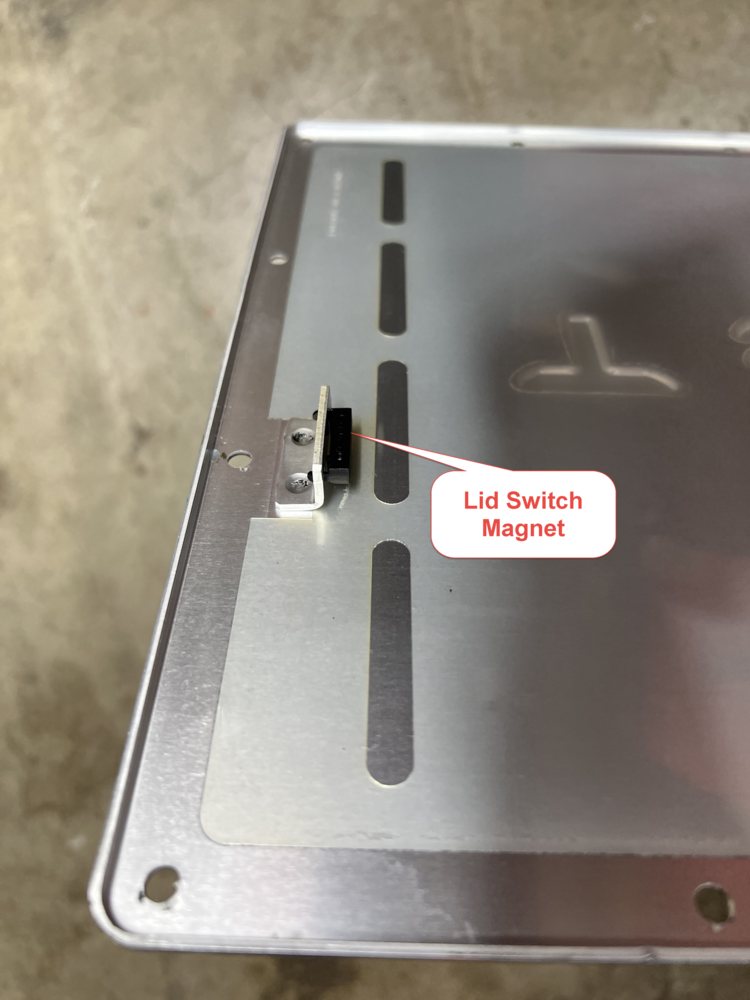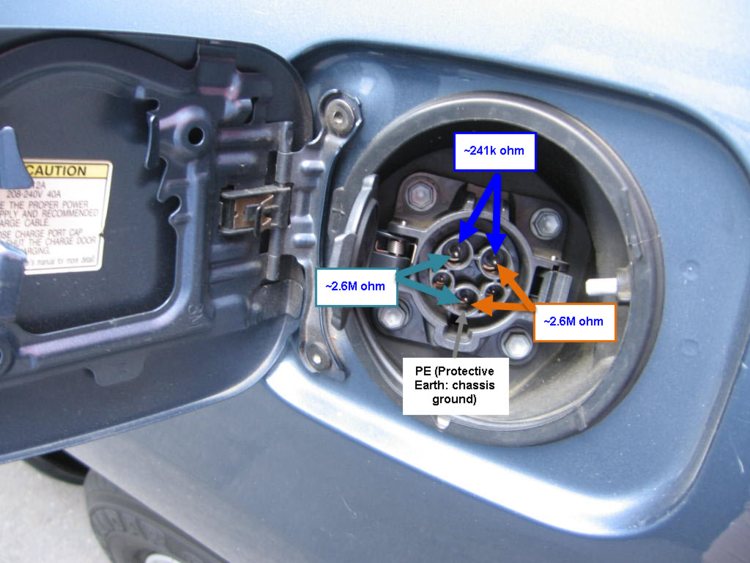I had an OBC AC fuse blow on my RAV4 EV, a month ago. It was sitting at a body shop, awaiting a replacement bumper, repair LF fender, and a door ding -- yet another idiot turned into me. The idiot's insurance paid for all repairs, but the body shop called me and said they could not charge it using the OEM L1 EVSE. By the time I got to it, the 12v battery was completely, totally flat (and it's a $340 spiral AGM battery, ugh).
After applying 12v, the instrument cluster read, "Charging: Stopped by System Malfunction"
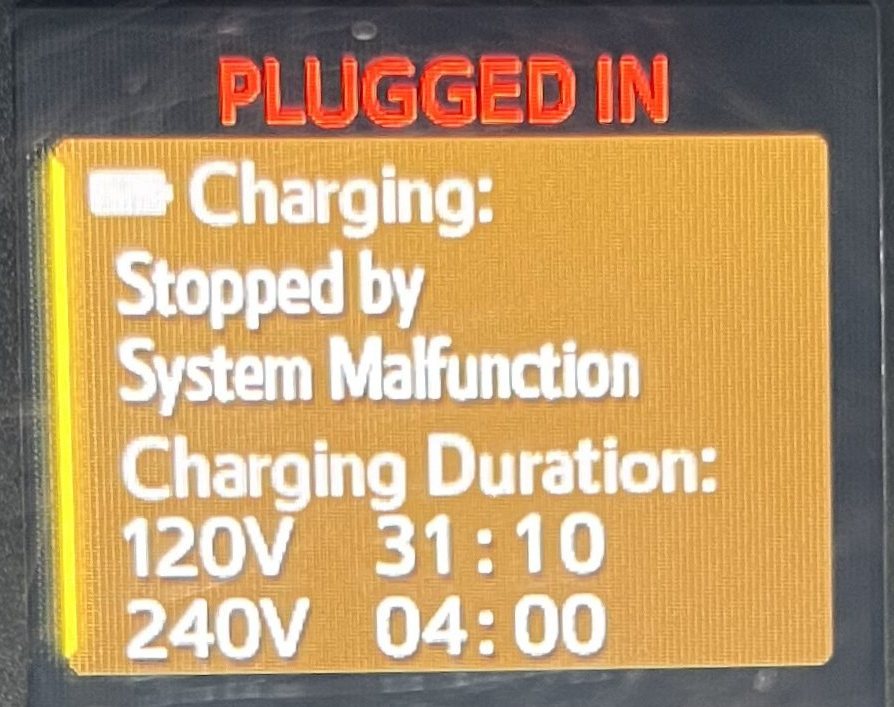
I had it towed home, where Tesla Powertrain Diagnostics showed the dreaded "CHG_f078 Charger internal problem detected".
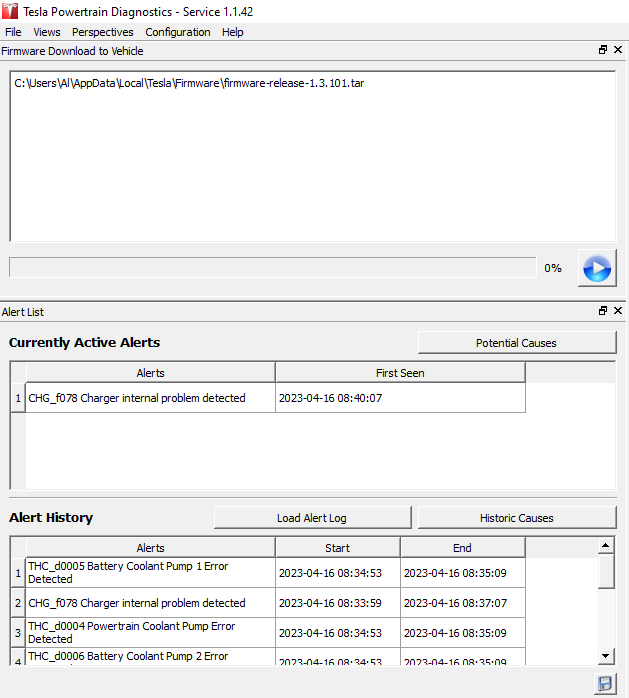
Here's
a 21-second video that shows my EVSE complaining, four tries to connect to the OBC.
I removed the OBC, found the upper fuse open, replaced both fuses, reinstalled, and it's back in service. I would estimate the total time involved to be around twelve man-hours, same as quoted elsewhere. The HVJB that's bolted to the right side (left, as facing from front) of the OBC is no fun at all to work with, and it's quite fussy to disconnect/reconnect. Yes, a mirror is absolutely required.
A few notes . . .
I pulled coolant hoses and reservoirs and dumped whatever coolant that escaped; upon reassembly, I replaced (topped up) with fresh. The cabin heater loop wants the PINK Toyota Super Long Life Coolant SLLC2,
not the merely Long Life Coolant SLLC1, which is RED. Where I am, at the Toyota dealer, it's $19/gallon for premix, and isn't available as concentrate. Oh, that price is only good if you order online for pickup at Will Call; if you walk in, they expect you to pay $38/gallon. Really.
The Blue Zerex G48 is for the Tesla DU/OBC/DC-DC Converter loop, and
is available as concentrate, but my local parts store does not have it in front; it's only available as concentrate "off the menu" and you have to ask for it; they then go on a hunt in back to try to find it. My store had three people running around at one point, looking for it. Price difference is $22 for premix vs $29 for concentrate. Why would I pay $22 for $11 of deionized water? Distilled water is $1.29/G here.
The battery coolant loop remained undisturbed in my fuse replacement repair.
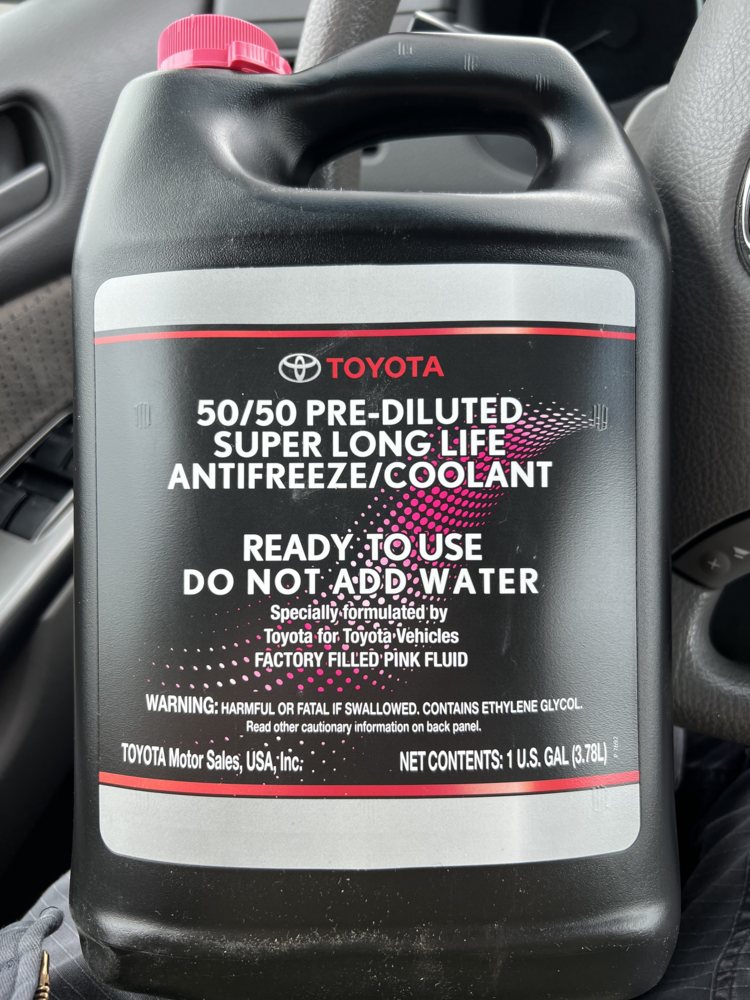
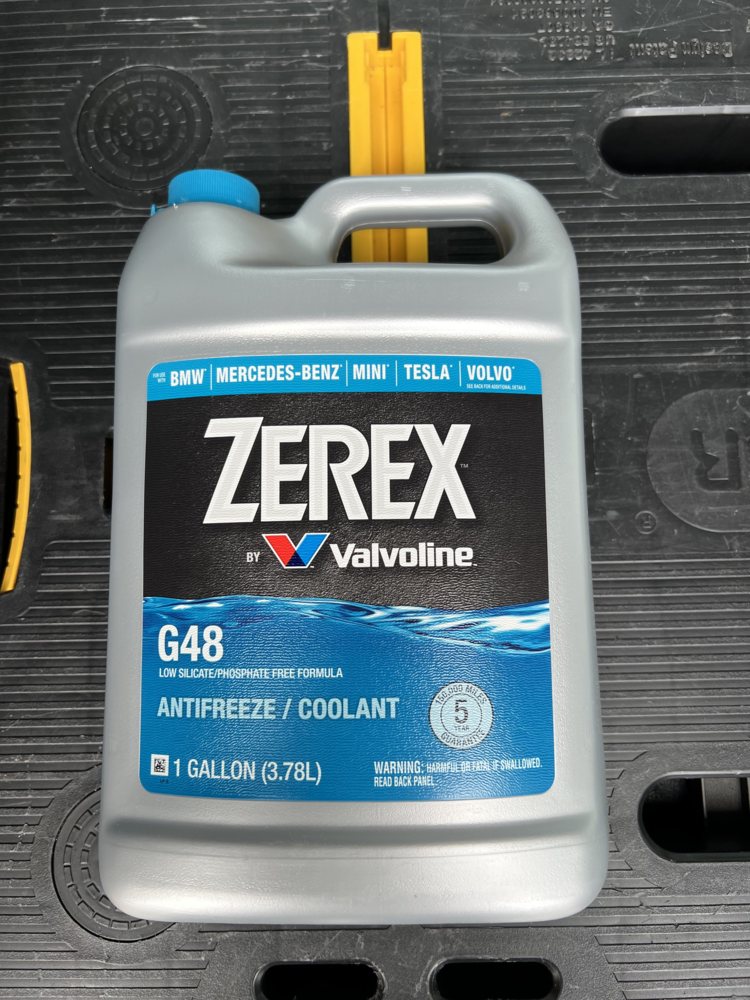
Many of the Tesla harnesses are retained using a clip that in many cases cannot be reasonably released without damage. I know this, because the Toyota dealers, during several previous repairs (OBC replaced, cabin heater replaced, DC-DC replaced: all under warranty) have kindly broken the clips and jammed them back into their respective mount holes, so it was easier for me to remove them the third time.
Striking out using Toyota's abysmal online parts catalogue (some of the worst line drawings you'll encounter from a manufacturer), I carried one of these harness clips into the dealer's parts department. The gentleman looked for a looong time (over 20 minutes), went in back and conferred with others, and eventually conceded that he had no idea how to obtain them. The consensus of the minds was that they must be furnished with the harnesses. Oh, boy.
I was forced to reassemble using the same broken clips in several places, but I've obtained generic aftermarket versions via Amazon, to try to use next time I'm working with those harnesses.
Broken sample:
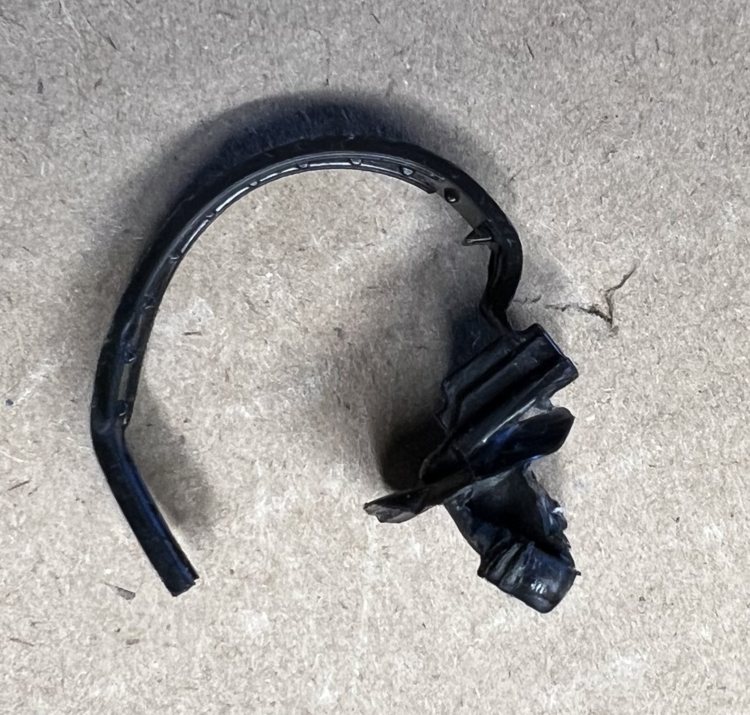
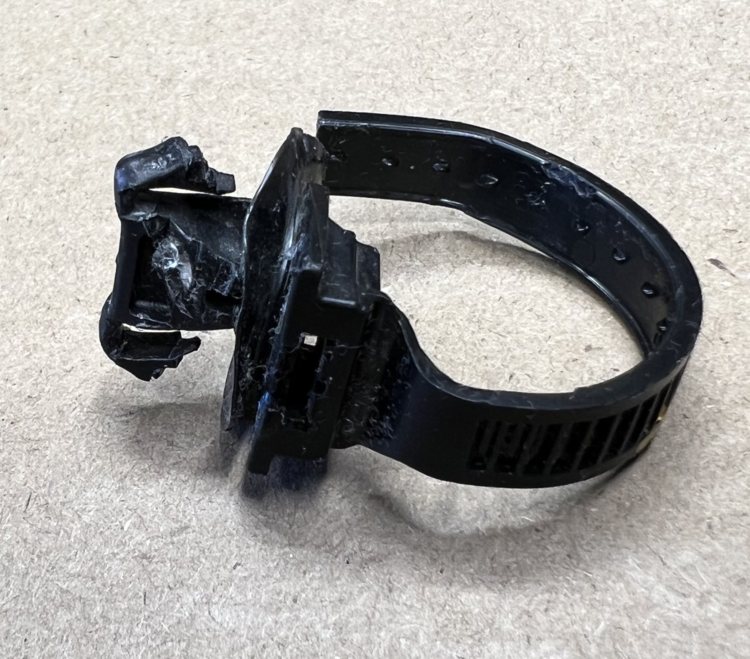
Generic replacements:


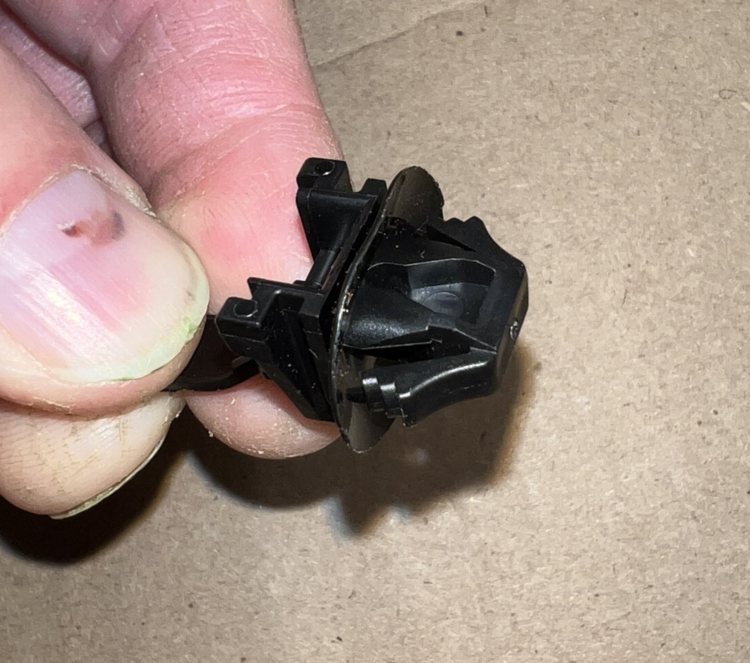
With the driver's side reservoirs removed, the heater & DC-DC removed, and the large baseplate that they're sitting on is removed, you can finally see the OBC (HVJB bolted to the left side of it in this pic):

When you start fiddling with the HVJB, don't bother taking this white plastic cover off (two screws), it gains you nothing. Even cutting the zip-ties doens't gain anything. The leads are the AC input lines from the Charge Port, and you're best off just leaving the white cover where it is, you can't obtain any more working clearance by touching it.
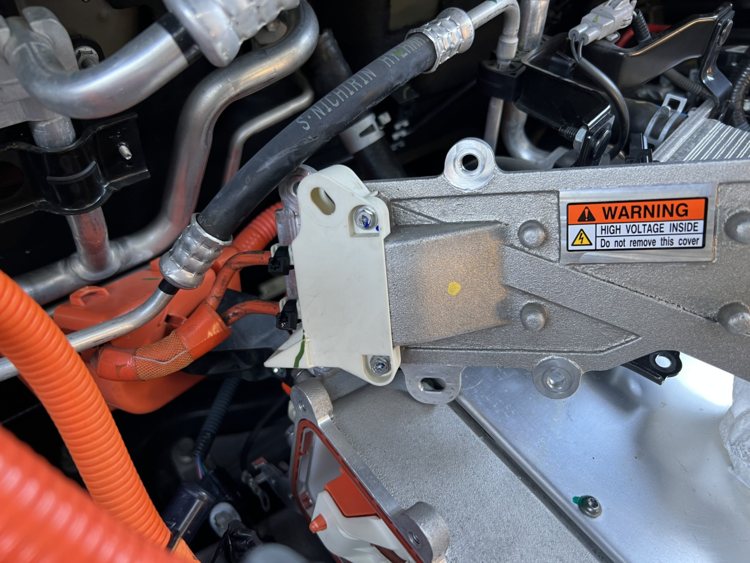
After removing the driver's side coolant line to the bottom of the OBC, and the four bolts holding the OBC down, it can be shifted a couple of inches to the driver's side, which provides enough room to remove the HVJB cover and begin working on the many, many bolted connections plus the two AC & DC connectors.
Releasing the tab on this AC input connector is especially not fun, as you are working with a mirror to place a tool on the tab to depress it. And you can't depress the tab and pull the harness at the same time, no room for two hands. Hemostat-like pliers helped a little.
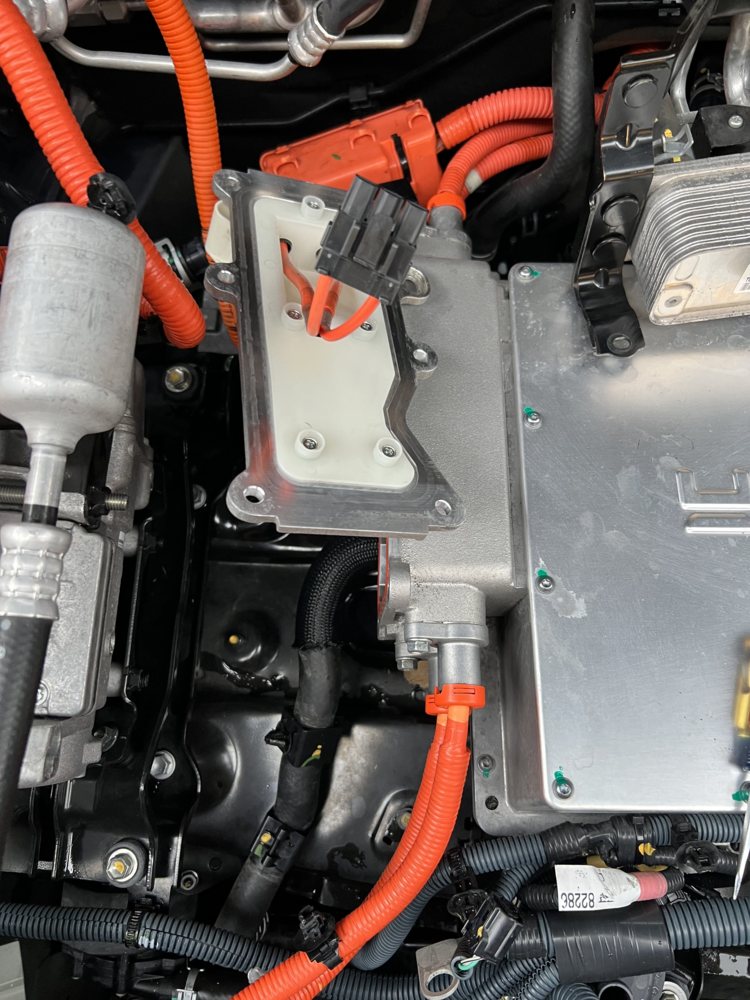
When you get all the many, many connections disconnected from the HVJB, you can disconnect the final OBC coolant hose from the passenger side of the OBC. As shown below, I flipped the OBC up on edge and used water pump pliers, but this will not work for reassembly, as the hose would have to be twisted to preload it.
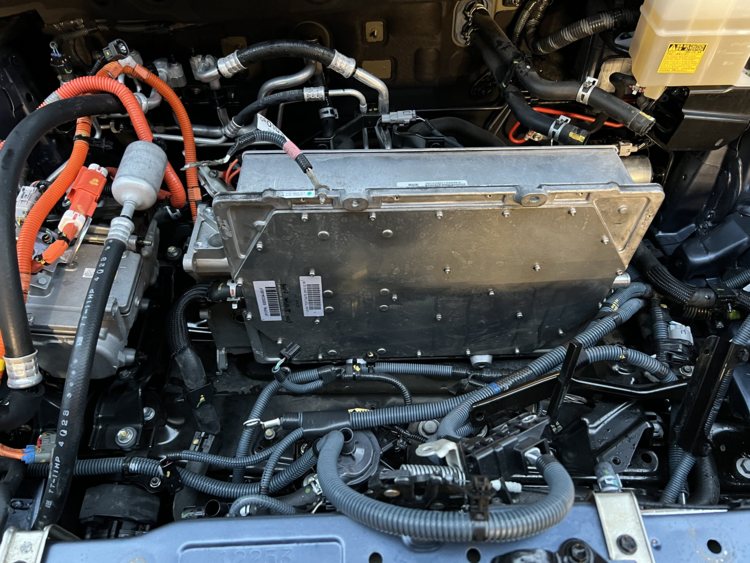
For assembly, for this hose clamp, and one other, I used a remote clamp tool I happen to have, a Mayhew Pro Rigiflex Hose Clamp Plier Model 28630 :
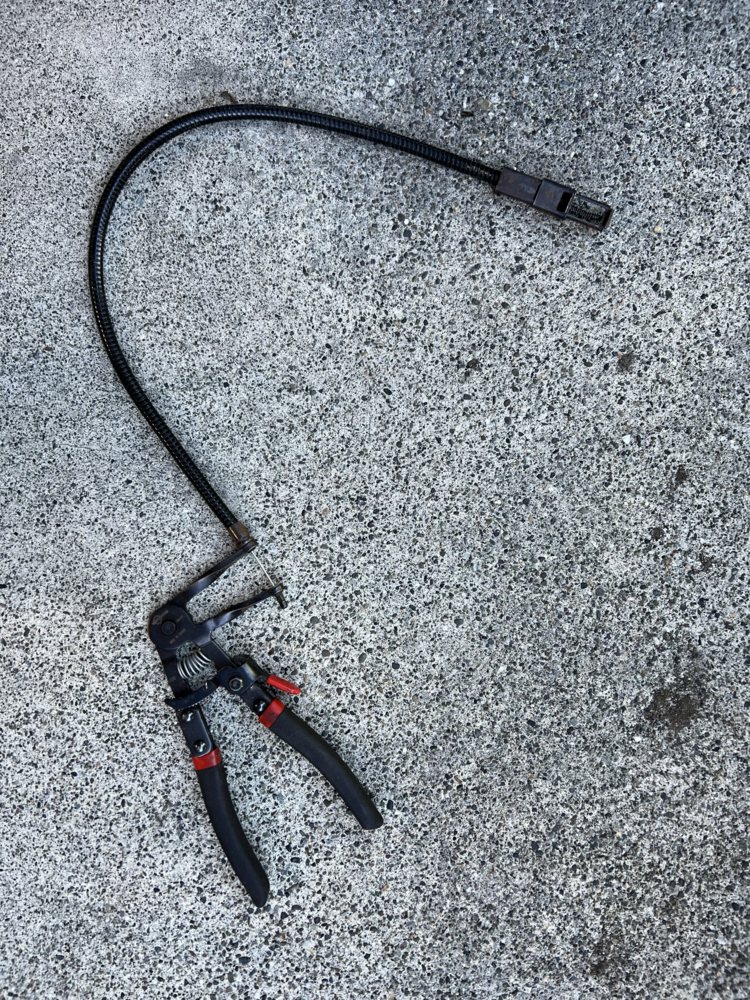
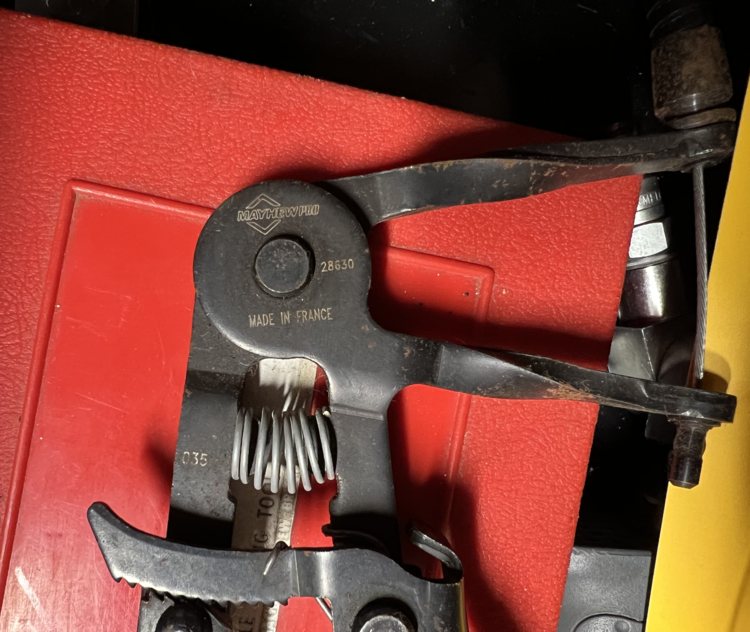
These are the cat's meow for these kinds of spring hose clamps, but for casual use you can get a cheap set via Amazon for around $15. They will make you cry, but you can get the job done. I tossed one of those cheap ones years ago, about the third time I used it. Here's a
canned search for cheap remote hose clamp pliers
When replacing the fuses (best practice is to replace them both), if you remove the PCB in order to release the insulating paper without cutting it, I have found that sometimes there is one screw that should be replaced with a longer version.
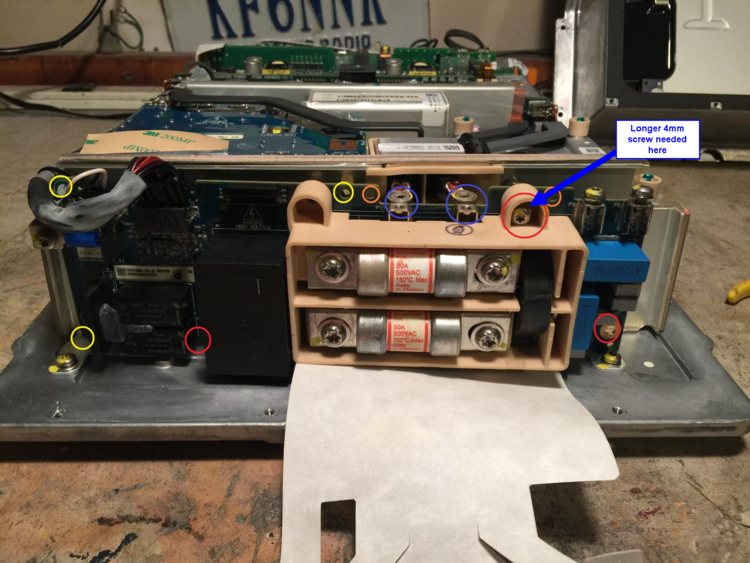
Because that screw goes through not only the PCB but also the fuseholder plastic, it needs to be a bit longer. Here's how mine stripped when reassembling it using only moderate torque:

A comparison of the longer screw I acquired to replace it, vs the OEM screws:

I replaced the OEM Ferraz Shamut (Mersen) fuses with Eaton Bussmann (Cooper) FWH-50B instead. See
the Wiki:fuses for more info.
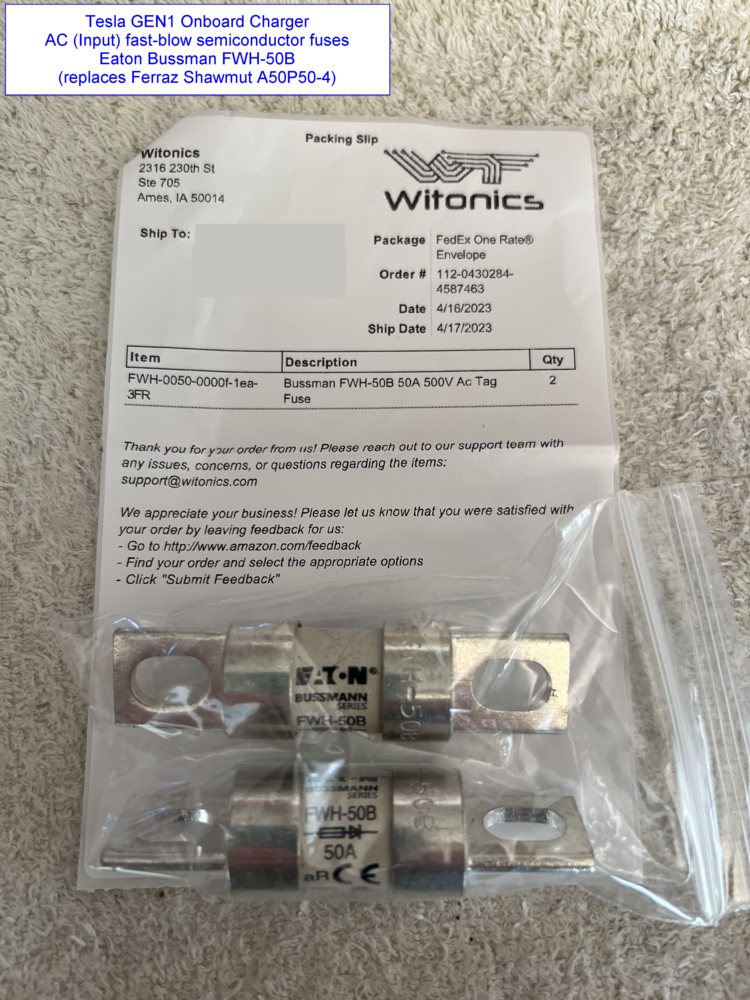
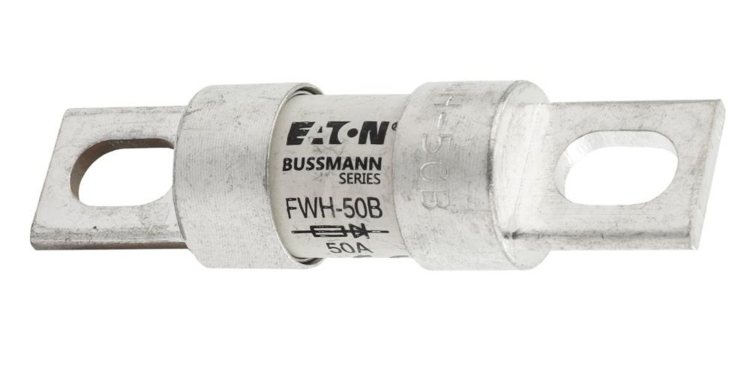
When assembling the connections to the HVJB, the black AC & DC Molex connectors should be lubricated using Nylogel 760G dielectric grease on these terminals "if it will be exposed to vibration and/or thermal cycling", which describes this service. See
the Wiki C Connector article
C Connector article for cites.
Nylogel 760G is available at Amazon.
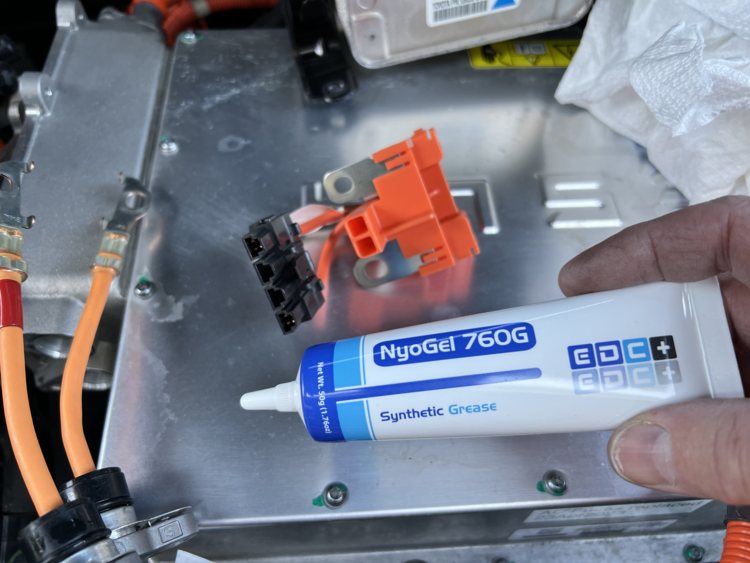
The only tools I used to perform this fuses replacement are these (plus the remote hose clamp pliers mentioned above):
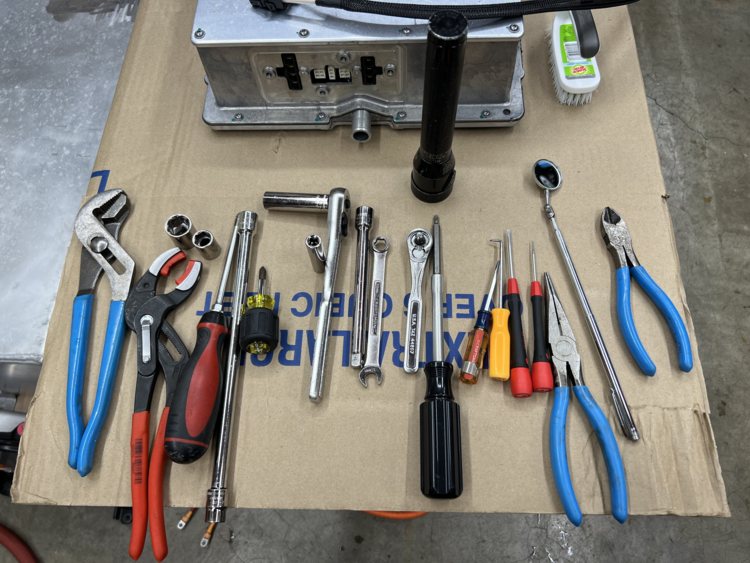
All the fasteners removed/replaced (other than the OBC's covers):

All the parts R&R'd:
